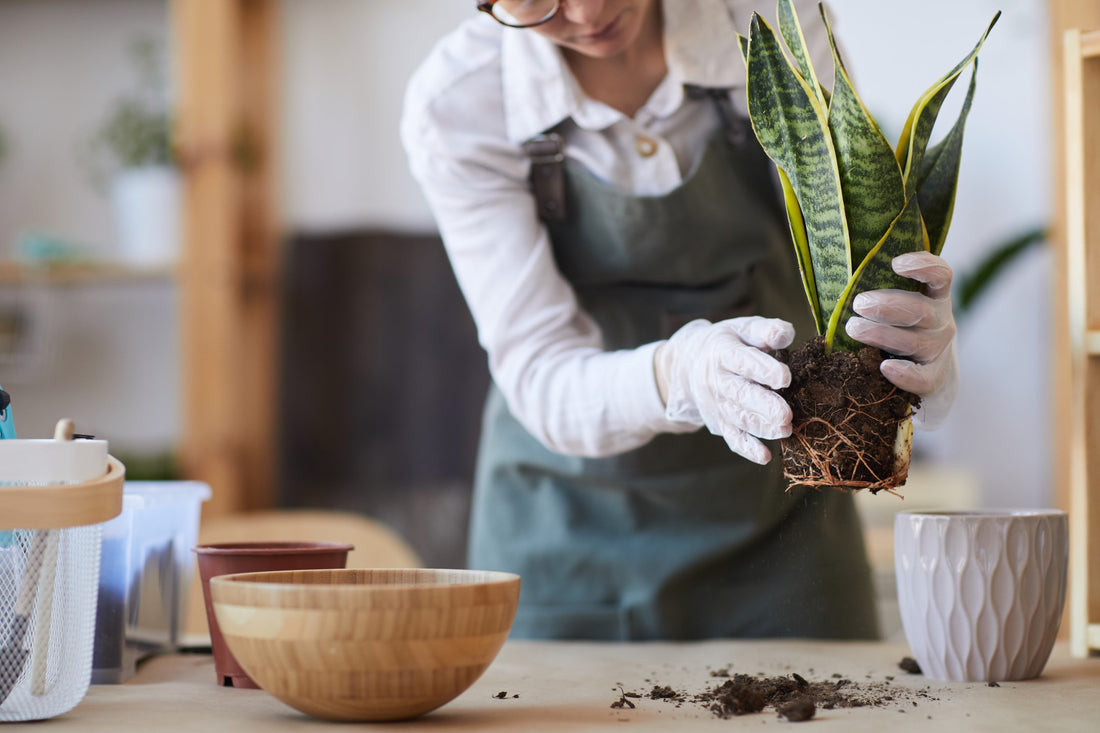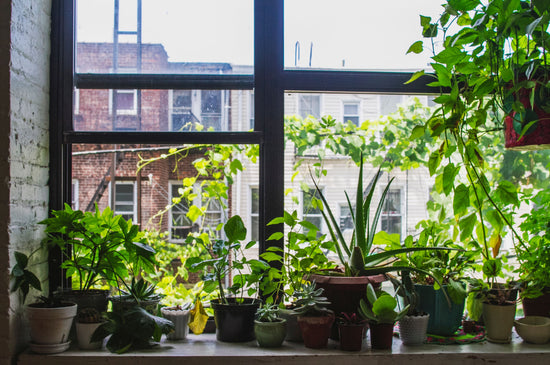The Ultimate Guide to Repotting Plants
Repotting plants is an essential part of keeping your indoor and outdoor plants healthy and thriving. Over time, plants outgrow their containers or deplete the nutrients in the soil, making repotting necessary to support growth, prevent root-bound conditions, and ensure proper drainage. Whether you're dealing with houseplants, succulents, or larger potted plants, knowing when and how to repot is key to maintaining vibrant, flourishing greenery.
Why Is Repotting Plants Important?
- Promotes Healthy Growth: Fresh soil provides plants with renewed nutrients that support growth.
- Prevents Root Bound Conditions: Overgrown roots can circle inside the pot, restricting water and nutrient uptake.
- Improves Drainage: Old soil can compact over time, preventing proper water flow and leading to root rot.
- Accommodates Growth: Larger pots give plants room to spread their roots and grow to their full potential.
When to Repot Plants
- Visible Roots: Roots growing out of drainage holes or circling at the surface indicate it’s time to repot.
- Stunted Growth: If your plant isn’t growing despite proper care, it may need more space or fresh nutrients.
- Water Drains Too Quickly: Compacted soil can lead to poor water retention, signaling it’s time for new soil.
- Top-Heavy Plants: If your plant tips over easily, it may need a larger, more stable pot.
- Annual Check: For most houseplants, repotting every 1–2 years is ideal to refresh the soil.
How to Repot Plants: Step-by-Step Guide
-
Choose the Right Pot
- Select a pot that is 1–2 inches larger in diameter than the current pot. Ensure it has drainage holes to prevent waterlogging.
-
Prepare Fresh Soil
- Use a potting mix appropriate for your plant type. For instance, succulents require well-draining soil, while tropical plants benefit from a richer, moisture-retentive mix.
-
Water the Plant
- Water your plant a day before repotting. Moist soil makes it easier to remove the plant from its pot and reduces transplant shock.
-
Remove the Plant
- Gently squeeze the sides of the pot or tap the bottom to loosen the root ball. For larger plants, tip the pot on its side and carefully slide the plant out.
-
Inspect the Roots
- Check for circling or tangled roots. Trim away dead or mushy roots with clean, sharp scissors. If the roots are tightly wound, gently tease them apart.
-
Place the Plant in the New Pot
- Add a layer of fresh soil to the bottom of the new pot. Center the plant in the pot, ensuring the root ball sits slightly below the rim.
-
Fill with Soil
- Add soil around the root ball, pressing gently to eliminate air pockets. Leave about 1 inch of space at the top for watering.
-
Water Thoroughly
- Water the plant immediately after repotting to help the soil settle and hydrate the roots. Allow excess water to drain.
-
Adjust Placement
- Place the plant back in its usual spot, but avoid direct sunlight for a few days to reduce stress.
Tips for Successful Repotting
- Don’t Oversize the Pot: Too much soil can retain excess moisture, leading to root rot.
- Choose the Right Season: Spring and early summer are the best times to repot most plants, as they are in their active growth phase.
- Use Clean Tools: Sterilize scissors, knives, and pots to prevent disease transfer.
- Refresh Soil Without Upsizing: For plants that don’t need a larger pot, replace the top 2–3 inches of soil annually to replenish nutrients.
Common Mistakes to Avoid
- Overwatering After Repotting: New soil holds more moisture, so adjust your watering schedule accordingly.
- Skipping Root Pruning: Ignoring tangled or dead roots can hinder growth.
- Repotting During Dormancy: Plants are less equipped to handle the stress of repotting during their resting phase.
- Using the Wrong Soil: Mismatched soil types can lead to poor growth or drainage issues.
FAQs About Repotting Plants
Q: How often should I repot houseplants?
A: Most houseplants benefit from repotting every 1–2 years, but slow growers like succulents may only need repotting every 2–3 years.
Q: Can I reuse old potting soil?
A: While it’s possible, it’s better to mix old soil with fresh potting mix to replenish nutrients and improve structure. Sterilize the soil to eliminate pests or pathogens.
Q: What should I do if my plant wilts after repotting?
A: Mild wilting is normal as the plant adjusts. Keep it out of direct sunlight, water sparingly, and avoid fertilizing for a few weeks.
Q: Can I repot plants in the same pot?
A: Yes, if the plant isn’t root-bound, you can keep it in the same pot and replace the old soil to refresh nutrients.
Q: Should I fertilize after repotting?
A: Wait about 4–6 weeks before fertilizing to allow the plant to recover and establish itself in the new soil.
Repotting plants is a rewarding process that helps your greenery thrive and grow. With the right techniques, you can give your houseplants the space and nutrients they need to flourish in any indoor or outdoor setting.





